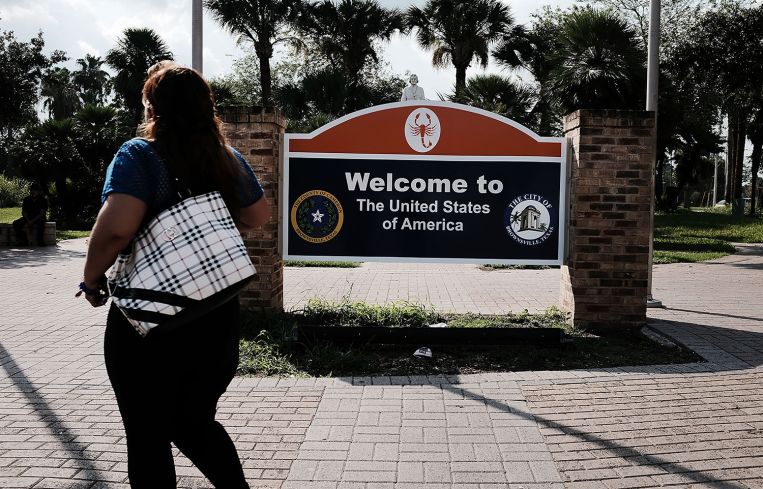How to Get the Globe to Fund Your Development Projects
By G. Lamont Blackstone June 26, 2024 11:23 am
reprints
It is both history and cliché that America is a nation of immigrants. Neighborhoods in cities such as Boston, New York, San Francisco and Miami were tenanted over two centuries by migrants from Europe, East Asia and Latin America.
History also attests to the importance of foreign capital in developing the U.S. landscape. In the 19th century, elite European investors financed the building of American railroads, the precursor to the 20th century’s interstate highway system.
Now foreign investors are back to finish the job. An economic stimulus initiative that was revised by the federal government in 2022 is coupling immigration with the importation of financial capital. And, as we approach a wall of maturing commercial real estate debt, with its impact on lender liquidity and underwriting, some developers will play this federal program as a critical chess piece for arranging their project capital stacks. We have been here before: Remember the financing upheavals of the 2008 financial crisis when CRE projects were checkmated by expanding funding gaps?

This timely gambit is the EB-5 Immigrant Investor Program. It is America’s version of similar initiatives in other countries such as Spain and Canada. And given the source nations of much of the development capital that EB-5 has attracted, it is also adding to the ethnic diversity of America, which has a strategic advantage as one of the most multicultural nations.
The EB-5 program was the focus of a May 2024 conference hosted in Atlanta by IIUSA, the trade association for what has become the immigrant investor industry. Over the past 10 years, I have seen EB-5 capital explored for diverse CRE projects — developments ranging from an inner-city data center, to a vertical farm adaptation of an urban warehouse, and to the rural expansion of a health care operator.
Part of the attraction of EB-5 as a gap financing source has been its impressive scalability. Proposed capital raises have ranged from $800,000 for an upscale restaurant in Manhattan (the minimum investment under the regulations revised in 2022) to over $100 million for high-rise developments such as New York’s Hudson Yards and Los Angeles’ Century Plaza.
At that conference I attended, IIUSA shared data indicating that the program continues to raise billions for American development projects and enterprises. Over $2.7 billion in planned investment has been attracted since EB-5 was reformed in 2022 — with new requirements for transparency and fund administration. Much of that capital has been sourced from China, India, Taiwan and Vietnam.
So, regardless of the rhetoric against immigrants of color that sometimes paints our recent discourse, the economy benefits from immigration — both as a source of financial capital and human capital. With an annual visa cap of just 10,000, the EB-5 program is a mere fraction of larger immigration portals such as the H-1B program, which allocates 85,000 visas annually. But with its ability to attract $800,000 or $1,050,000 per investor, the EB-5 program produces outsized results. It does so while supplementing our conventional sources of debt and equity.
Hence, these EB-5 investment parameters, combined with the annual visa allotments, are punctuation points for arguments supporting immigration. And we might well speculate how much additional development of multifamily, retail, industrial and hospitality projects the program could support if Congress renews its reauthorization after it expires in late 2027.
In a prior op-ed, I argued that human capital should be viewed with the same clinical perspective that values diversity in the construction of stock portfolios, a model influencing the management of financial capital. Ironically, the federal government’s Immigrant Investor Program has allowed one driver of demographic diversity — that is, authorized immigration — to become a source of CRE financial capital. Those development projects, in turn, could become employment platforms for diverse talent pipelines such as Project REAP.
Thus, what has now become a contest of perspectives about diversity and inclusion, when played thoughtfully, is like the three-dimensional chess popularized by the “Star Trek” franchise: It can be played on more than one level. It can encompass moves to shape the talent pools of our organizations. Yet, it can also include maneuvers to form the capital stacks of development projects, in both urban and rural markets.
All that is necessary is that we recognize the value of engaging in this exercise. But unlike the chess played by grandmasters, this is not a zero-sum game. Diversity applied from diverse perspectives, and at any level of the metaphorical chess board, can offer us win-win scenarios.
G. Lamont Blackstone is a commercial real estate consultant and urban redevelopment specialist who is also the former board chair of the national diversity initiative Project REAP.


